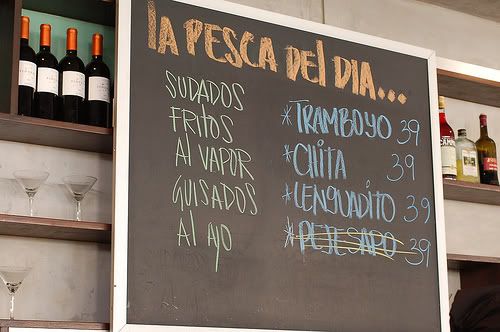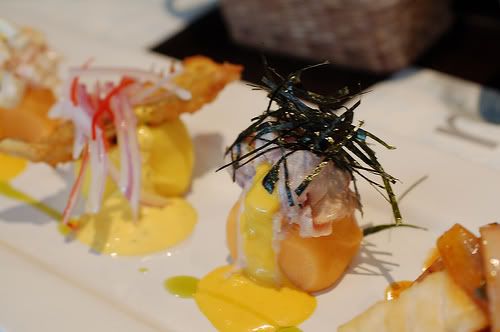 After a long hiatus, we are back to our old blogging ways! Too busy to blog over the last few months, you ask? We would have to answer, 'yes!', which is a good thing. You can expect the posts to resume, including five blogs about our recent trip to Peru, recent events and creations, and some fun photo essays of events from the past.
After a long hiatus, we are back to our old blogging ways! Too busy to blog over the last few months, you ask? We would have to answer, 'yes!', which is a good thing. You can expect the posts to resume, including five blogs about our recent trip to Peru, recent events and creations, and some fun photo essays of events from the past.
We started our tour of Peru and Bolivia with a "culinary tour" of Lima. Lima is a bustling city rich in history-- both local and imported European. The cuisine reflects the abundance of locally available fruits, vegetables, meats, and seafoods, oftentimes influenced in preparation by the varied cultures and groups who occupied the area throughout its rich history.
Our first stop on the culinary tour was a delightful, semi-outside "cebicheria" named La Mar. It was explained to us that it "never rains in Lima" due to its elevation and micro-climate. Therefore, the restaurant is relatively open, affording a pleasant breeze and feeling of spaciousness, even as the diners crowd in to sample the fresh fish.




Our meal started with a bucket of fried plantain and vegetable chips, served with three delicious dipping sauces: cilantro and mint, roasted pepper, and chili.
We also sampled some deliciously refreshing (and strong!) local drinks... but more on those in a future post.



The marinade used in cebiche is citrus based, with lemons and limes being the most commonly used. In addition to adding flavor, the citric acid causes the proteins in the seafood to become denatured, which pickles or "cooks" the fish without heat. The result tastes more like a cooked dish and less like raw fish preparations such as Japanese sashimi. Old style cebiche was left up to 3 hours for marinade. Modern style cebiche usually has a very short marinating period. With the appropriate fish, it will marinate for as long as it takes to mix the ingredients, serve and carry to the table.

Following cebiche and causitas, we relied on our guides to suggest some additional local delicacies to sample...even though we were getting full at that point! We sampled some delicious broiled scallops with local cheese, pan sauteed calimari salad with peanuts and frizzled ginger, and stuffed and fried crab with roasted tomatoes and bok choy. We finished the meal with a delicious pumpkin ravioli (not pictured).



Alas, there was no room left for dessert. Then again, it was just our first stop on the culinary tour! Check back for our future food adventures, including a visit to the open-air markets, trying cuy (guinea pig)--a local favorite, a review of Peruvian drinks, and our fine-dining experience at Astrid y Gaston-- the finest restaurant in Lima. Buen Provecho!









